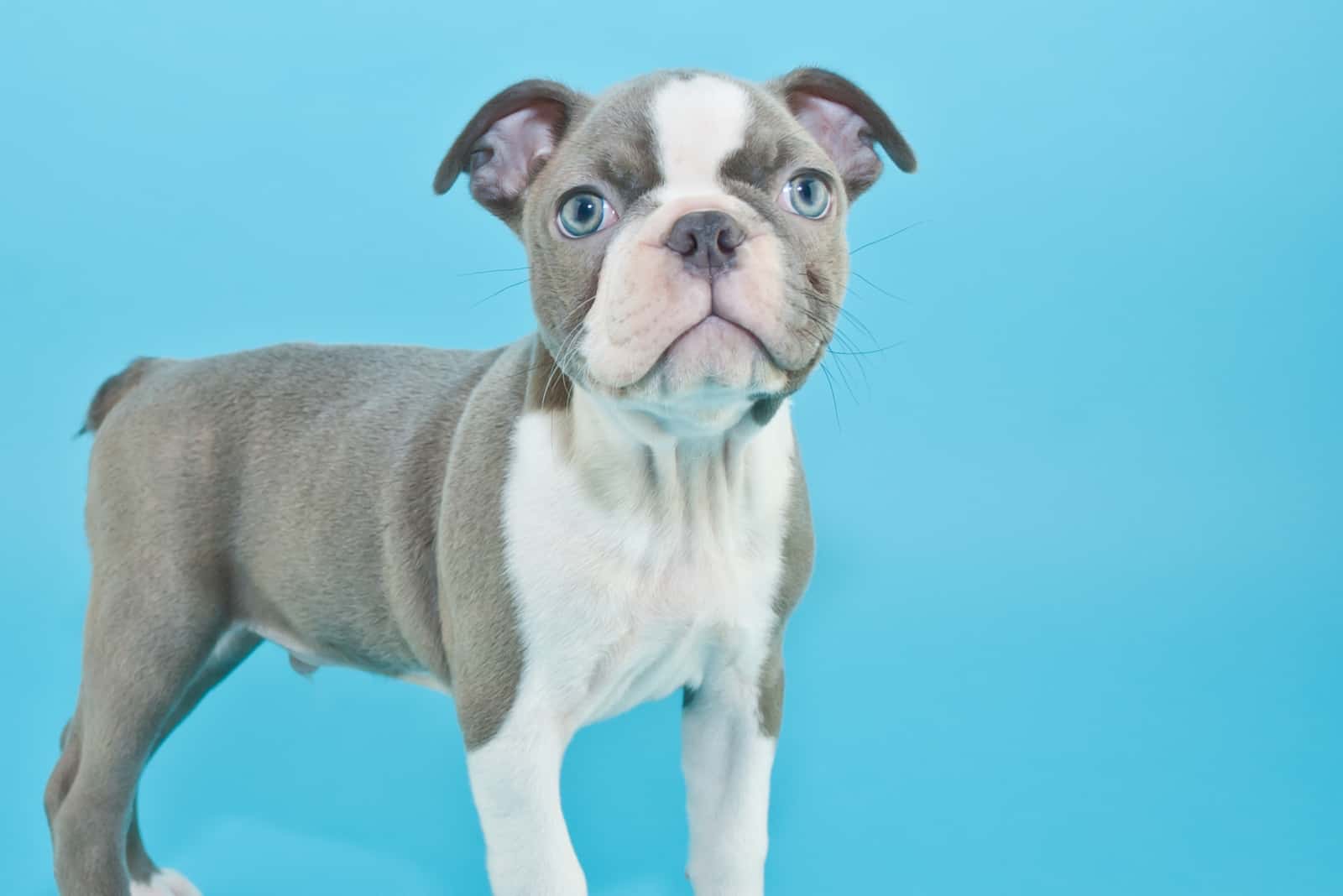Originally from the United States, the Boston Terrier is a dog breed that qualifies as a non-sporting dog according to the American Kennel Club (AKC) standards.
Because of their lovely colors and even lovelier personality, the Boston Terrier is also known as the “American Gentleman.” This charming fella has also been Massachusetts’ official dog and Boston Uni’s official mascot for almost a century.
The Boston Terrier is an excellent companion for all families. They’re small in size and have an affectionate nature, making them good sidekicks for both older people and kids.
Just as much as kids would love this dog, the Boston Terrier itself will love kids and their playtime.
Today, we’re going to tell you all about this dog breed and assure you that the Boston Terrier, in fact, the Blue Boston Terrier belongs in your home.
What Is The Blue Boston Terrier?
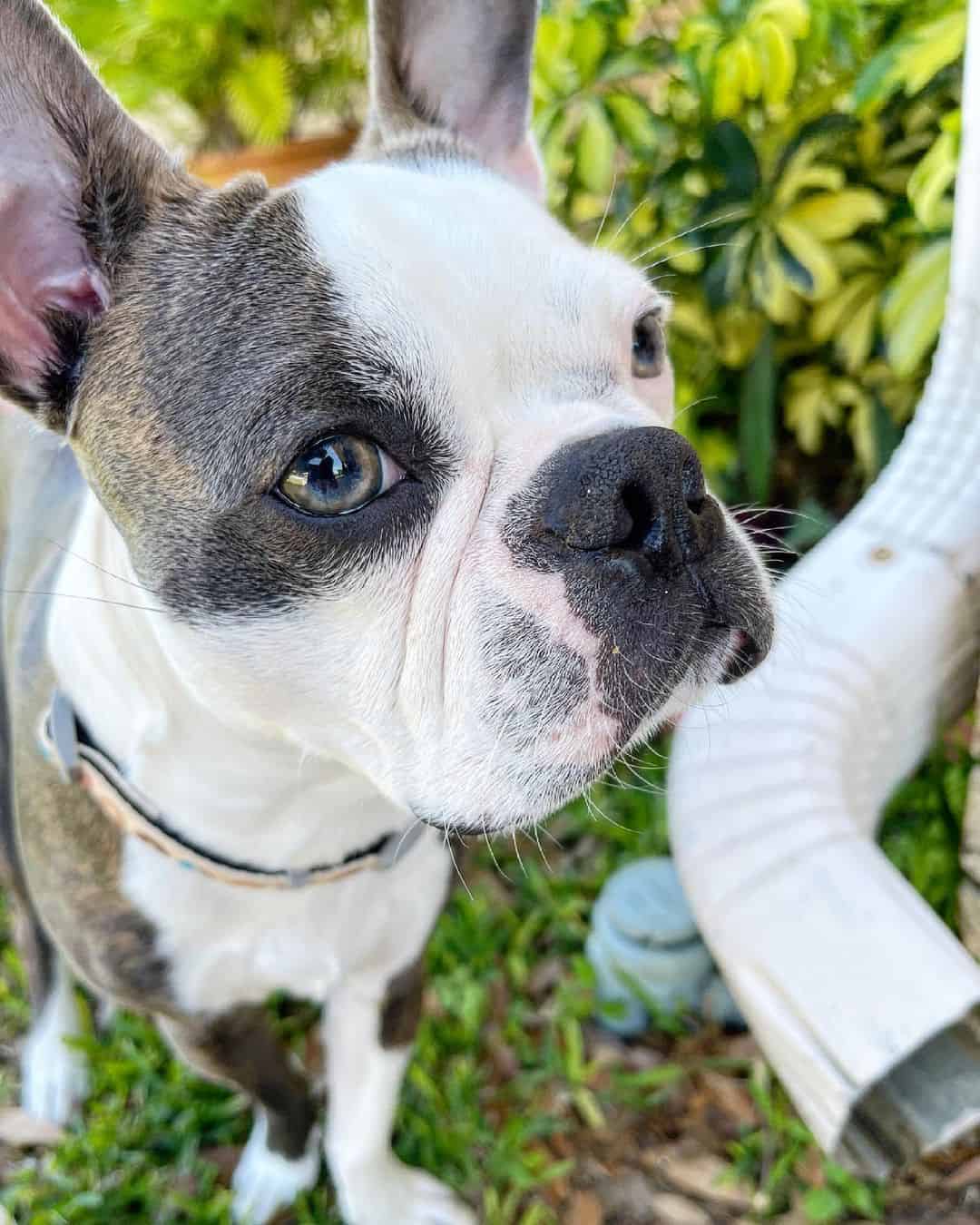
Photo from: @itsblu_thesuperhero
As we already mentioned, the Boston Terrier has Boston origins dating back to the 1870s, 1875 to be precise when Hooper’s Judge was bred to Burnett’s Gyp.
This dog is a cross between an English Bulldog and a white English Terrier. This bull terrier mix shares the same ancestry as the much-loved French Bulldog.
Ever since then, breeders have worked to refine it to today’s version.
Interestingly enough, the blue color this Boston Terrier sports is a genetic mutation and a result of poor breeding practices.
The mutation in the chromosome pool of the Boston Terrier leads to the blue color. Instead of coming out with the natural color, it is blue, grey, or silver.
The other colors this breed supports are black and white, brindle and white, and seal and white.
The American Kennel Club has some specific requirements when it comes to Boston Terrier colors. For example, the black, seal, or brindle Boston terriers would each be ineligible to get official paperwork.
Differences Between A Blue Boston Terrier And Other Colors
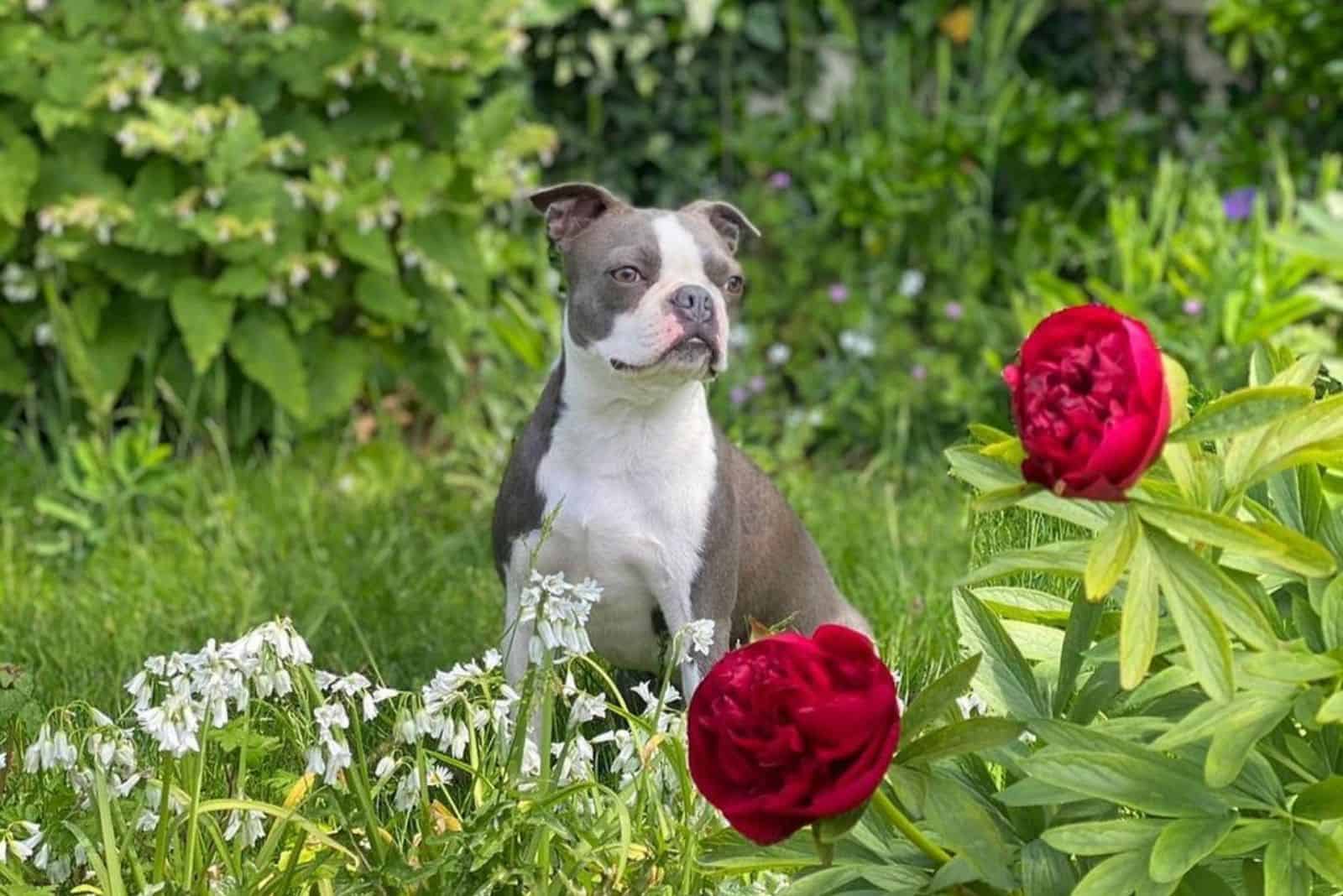
Well, the answer to this question is pretty simple. As the name suggests, the significant difference lies in the color of the dogs.
Almost all the different colors have a coat of white mixed with another color, out of which the most common is black and a seal color, which, when in sunlight, has a black cast to it.
There are also some dogs with a mostly white coat, and some even have an all-white coat. The usual black and white coat, which the majority of the public refers to as the tuxedo, is regular with a splash of white on the chest, a white blaze, and white along the muzzle.
With the brindle and white color, brindle refers to the pattern rather than the color. Moreover, the seal and white coat are the most famous among the public due to the red undertone in its color.
Some people also have mistaken seal with brown, but whatever it may be, it is readily accepted by the AKC.
AKC Blue Boston Terrier & Recognition Of Different Boston Terriers
At first, the AKC didn’t exclude any colors. But, later, in 1914, it became more discerning and began accepting only specific colors. The colors solid black, tan and black, liver red, and mouse or blue became unwanted.
Even the all-white coat was disqualified. Nowadays, solid black still isn’t desirable to the Club as well as solid brindle and solid seal with no markings. Grey and liver are also disqualified.
As for the white markings, they can be displayed on the chest as a splash, a blaze between the eyes, and a muzzle band. However, the white markings on the collars and legs are not really appreciated.
How Does A Blue Boston Terrier Look?
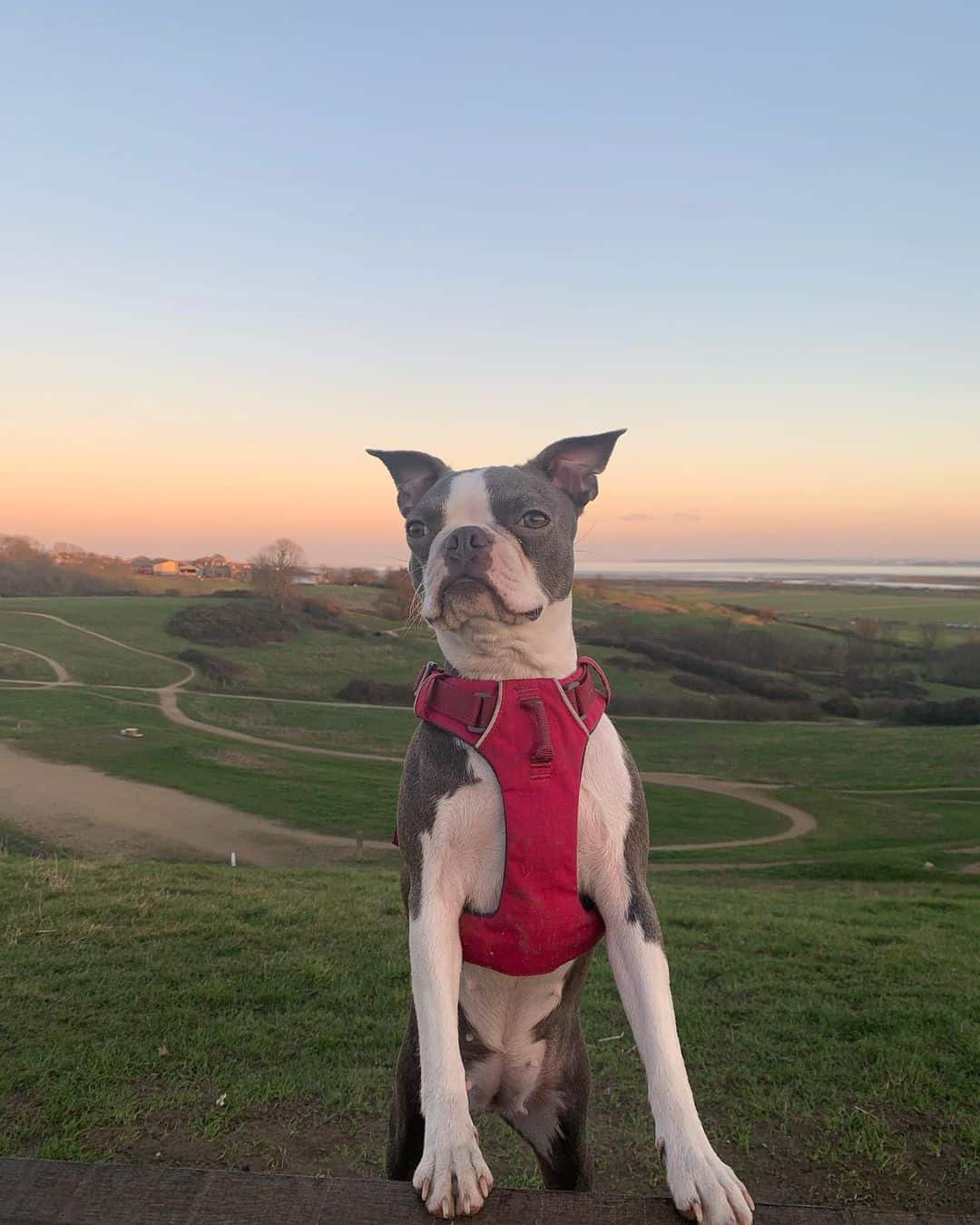
Photo from: @peggypeach_bostonterrier
This non-sporting dog is a whimsical pup with a very attractive appearance. The blaze between the eyes and the banded muzzle only adds to their good looks.
They have brown eyes, a black nose, and the most adorable puppy-eyes you’ll ever see.
Boston Terriers are small dogs with a huge desire to be a part of your world and always love to be involved in everything that’s going inside your home. Even their erect ears make them always look interested in what we have to say.
With a compact body, a short tail, and the cutest ever tuxedo coat look, the blue Boston Terrier is an ideal partner for cuddling with you on the sofa.
What The Blue Boston Terrier Is Like: Personality And Temperament
The top five words to describe the blue Boston Terrier’s character are cheerful, clownish, friendly, and majestic.
These dogs sure know how to show affection, but their temper is something to be aware of. Usually, they’re not aggressive dogs, but they can be if circumstances provoke them.
Well, if you go through the socialization process as early as you can in puppyhood, you shouldn’t have to worry about your blue Boston Terrier acting aggressively.
All in all, these dogs are very polite with other dogs. They don’t bark much, which makes them excellent apartment pups.
Boston Terrier Colors And Coat Types
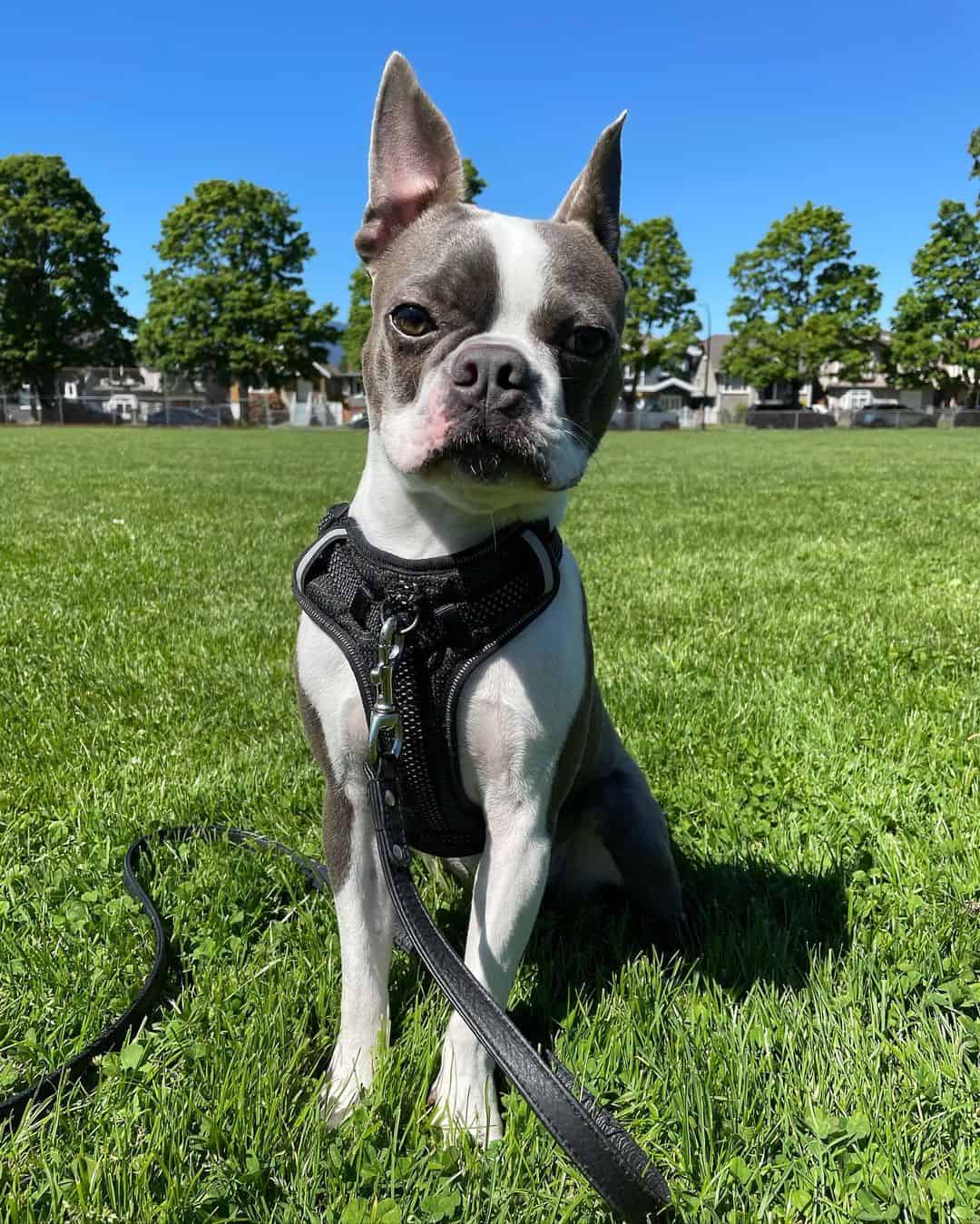
Photo from: @good.boy_lloyd
There are three standard colors or color combinations in Boston Terriers:
• Brindle with white markings
• Seal with white markings
• Black with white markings
However, the AKC has a breed standard by which colors like blue, brown, and merle don’t pass as official. Merle is the most unique of all colors with a patchy coat and blue eyes or one blue and one black eye.
Then we have predominantly white with tiny patches of black, usually on the head and some spots on the body.
The brown-colored Boston Terrier is also referred to as the liver Boston Terrier with a brown nose instead of a standard black one.
The most famous Boston Terrier is our dog of the day, the blue Boston Terrier. This color is the most attractive of them all. These dogs have blue noses and even have blue eyes, which is quite rare and desirable.
Many pups have a silver or grey hue and a shiny silver undertone that can be seen in the sunlight. They’ve become very popular and can cost as much as $2,500!
The coat of the Boston Terrier is smooth and fine. It’s easy to brush it, and it also sheds less than other dogs.
Full Grown Blue Boston Terrier: Size, Weight, And Height
Generally speaking, Boston Terrier dogs can be divided into three weight categories:
• Under 15 pounds
• 15 to 19 pounds
• 20 to 25 pounds
Their height is somewhere between 12 to 17 inches.
As your Boston Terrier puppy grows, he will go through various changes, physically and emotionally, as well as through growth and weight gain. These changes also depend on your dog’s diet and environment.
By the time your Boston Terrier puppy reaches 12 full months, you can expect the smaller ones to stop growing. The bigger Boston Terriers stop growing after 14 months. Still, no matter how big they get, they’re on the small end of dog sizes.
Health Issues Of All Boston Terrier Dogs
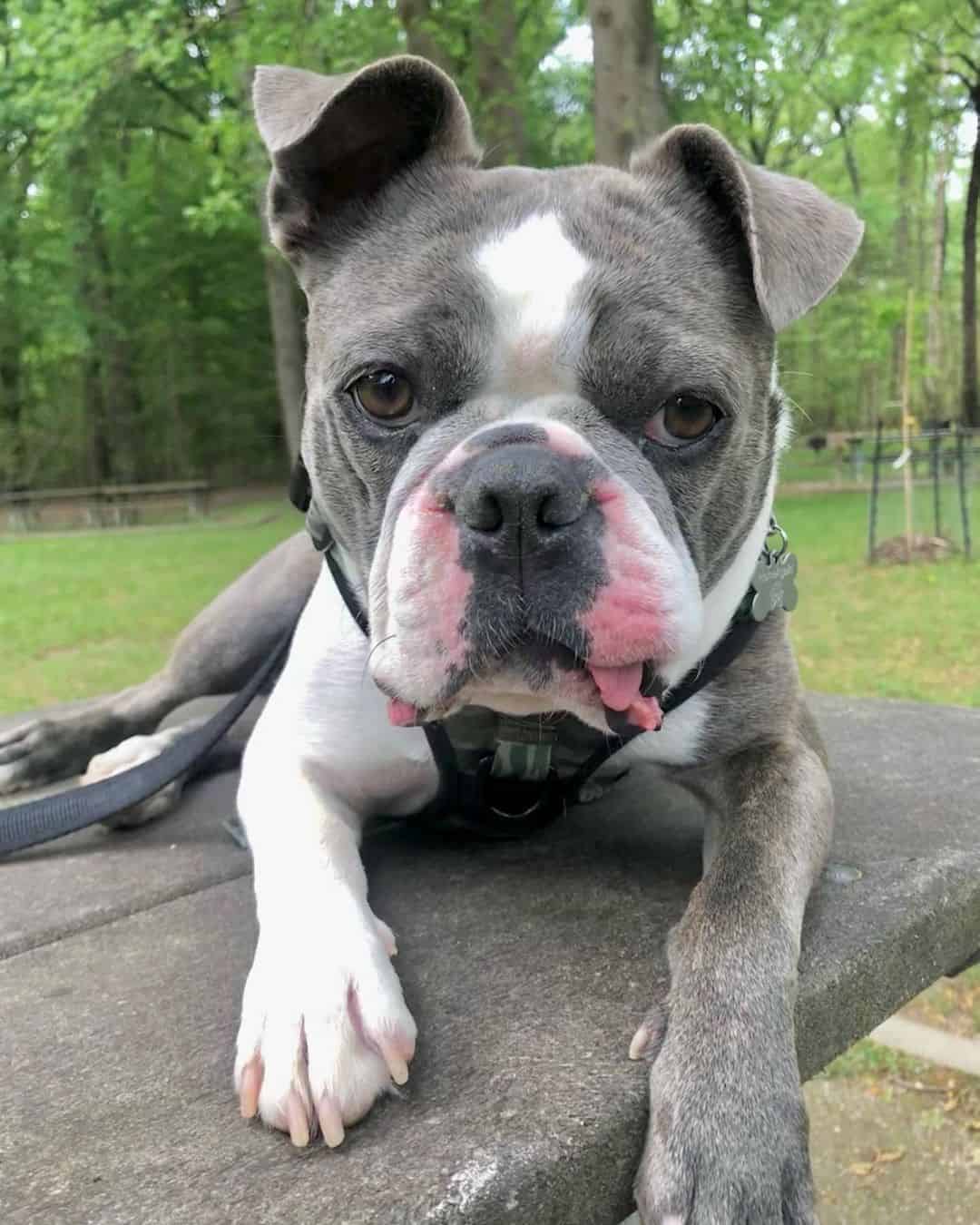
Photo from: @justice_fur_ball
The blue Boston Terrier is an energetic dog breed that’s quite active and ready to play. However, there are always some potential health issues that might strike your puppy. The biggest problems could be eye problems as well as breathing problems. Still, there are genetic issues that must not be looked over.
Parvo, rabies, and distemper are conditions that might affect your blue Boston Terrier, but with proper vaccinations, they’re treatable.
There are health risks only blue Boston Terriers are prone to because of their distinctive coloring.
First, let’s discuss some health issues all Boston Terriers are prone to.
Breathing issues
Brachycephalic syndrome is very common among the Boston Terrier breed. Snoring, snorting, and heavy breathing are all symptoms of respiratory problems. They can result in resistance in the nose and larynx. Breathing problems are genetic, but they’re still treatable. Meds through food and a proper diet are the answer.
Obesity problems
Obesity is very dangerous for a small dog breed like the Boston Terrier. It weakens the joints and causes metabolic, digestive, and heart issues.
Boston Terriers are very prone to food allergies, so make sure you know what you’re offering them and how much of it.
Orthopedic issues
Orthopedic issues are the most significant health issues for Boston Terriers, patellar luxation being the most common.
Untreated patellar luxation can result in problems like anterior cruciate ligament injury and arthritis.
Symptoms are pain, limping, hindrance when stretching the legs, and laziness. Besides patellar luxation, be aware of hemivertebra and hip dysplasia.
Skin issues
Skin allergies in Boston Terriers are called atopy. Atopy can lead to pyoderma, demodectic mange, and mast cell tumors. It affects the skin, feet, and paws. If your dog is itchier than usual and has frequent ear infections, you can suspect it’s suffering from a skin condition.
Also, Boston Terriers are prone to hair loss, so that’s something that shouldn’t surprise you.
Hearing issues
Constant ear infections not only bother your dog, but they can lead to deafness. If you see symptoms like a bad smell, redness, or itchiness, consult your vet.
Eye issues
Boston Terriers are predisposed to eye issues. As they grow, the chance of them becoming blind increases. However, proper care might help to avoid this condition.
If your dog scratches his eyes often, a corneal ulcer might be the problem. This ulcer may lead to corneal dystrophy, which is painful and may cause blindness.
Cataracts are a common problem for older Boston Terriers. It’s a condition when the dog’s eyes become cloudy. Cataracts can be caused by diabetes.
Other eye issues are cherry eye, dry eye, glaucoma, and entropion.
Are Blue Boston Terriers Healthy?
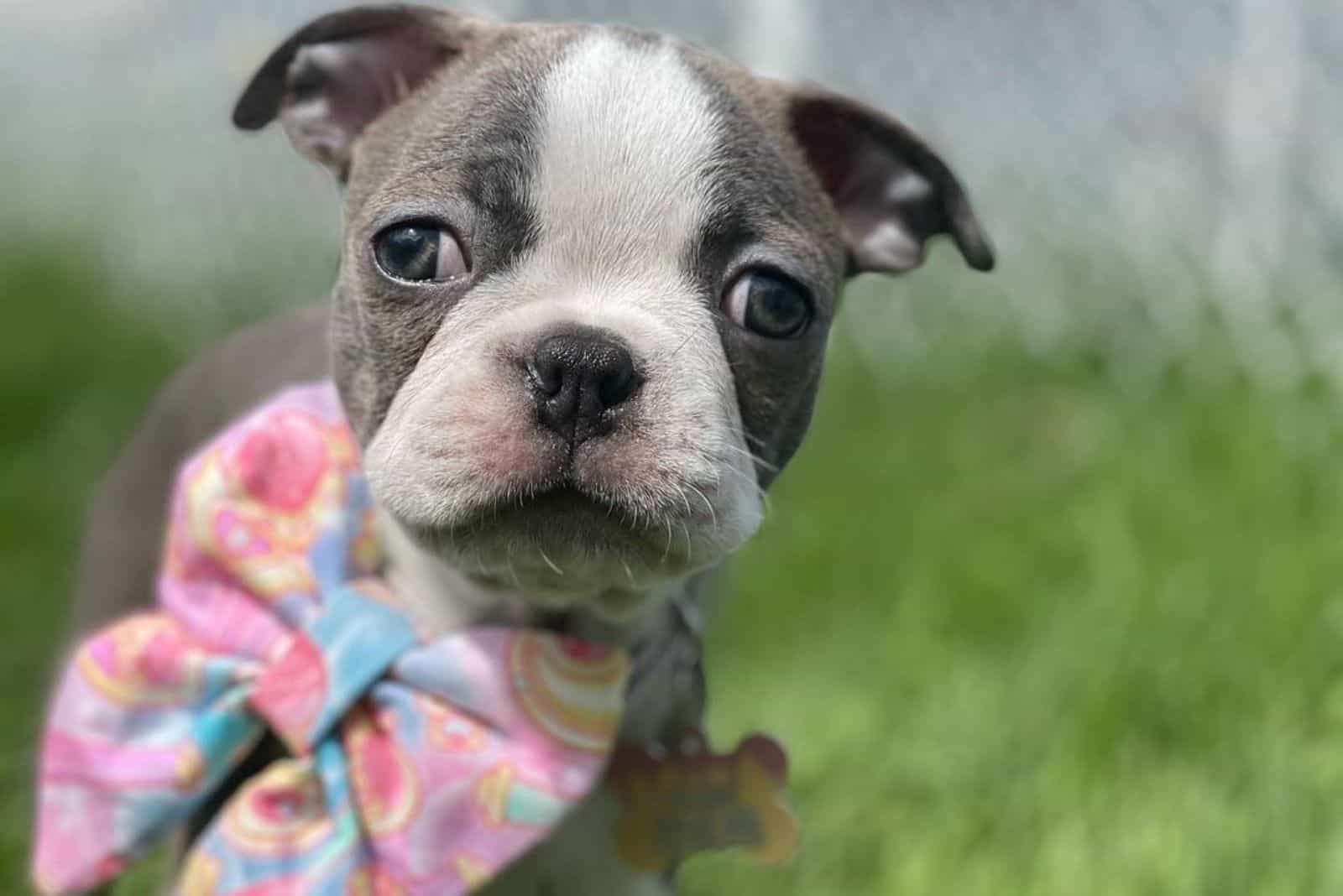
Because of its specific color, the blue Boston Terrier is prone to a list of other health problems.
The blue color is a genetic mutation and a result of poor breeding practices. Meaning, there’s a huge chance this dog breed will be prone to many health issues.
The blue Boston Terrier has something called blue Doberman syndrome. It’s a medical condition among dog breeds with a diluted coat. This dilute gene causes additional problems.
It leads to a skin disease called color dilution alopecia (CDA). CDA leads to weak hair and hair loss in patches that become dry and itchy.
This condition strikes almost all diluted dogs, but it is not something that should stop you from getting a blue Boston Terrier. Despite being prone to CDA, these dogs are generally in good health.
A vast majority of their health issues are skin-related.
Still, you should be happy that CDA is rather easy to maintain with proper guidelines. However, blue Boston Terriers suffering from it should not be bred further.
Lifespan: How Long Does A Blue Boston Terrier Live?
We’re pleased to say the blue Boston Terrier can be your partner in crime for an amazing 13 to 15 years! That’s how long the lifespan of this breed is. These doggos usually die of old age, cardiac arrest, and cancer.
Food And Dietary Requirements For A Full Grown Blue Boston Terrier
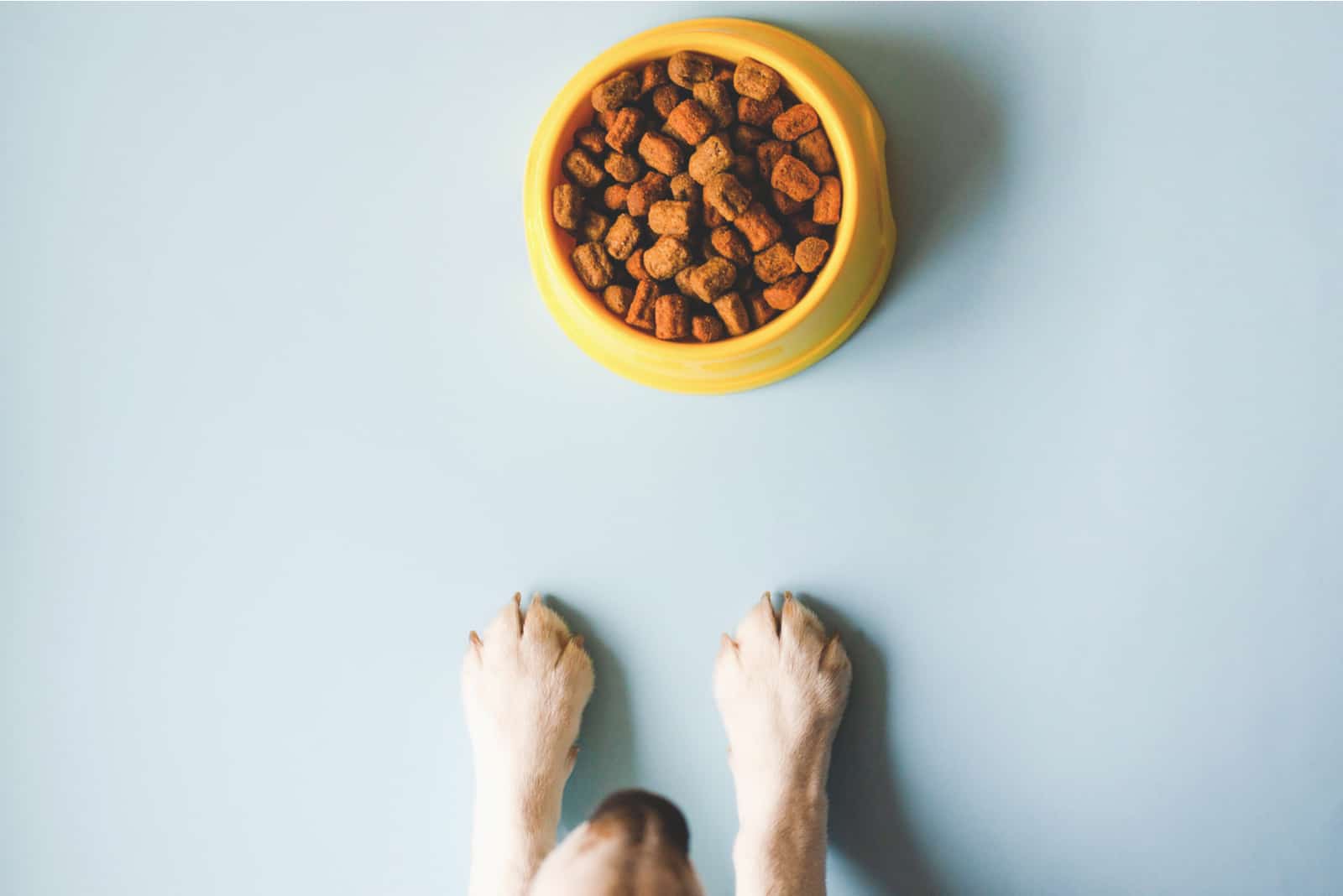
Even though they’re small dogs, Boston terriers need to eat a lot of food because they’re highly active dogs during the day. They need a bit more than small dogs usually do.
According to experts, a Boston Terrier weighing around 10 pounds will need around 450 calories a day, while an adult dog will need no more than 530 calories.
What you should know about this dog breed is that they’re pretty gassy. And no, THAT’S not pretty.
The reason why these little guys smell so bad is their protein-based nutrition. They can eat wet or dry food or a mixture of both. It all depends on what your dog prefers.
An adult blue Boston Terrier should eat between 1 to 2 and 1/4 cups of dog food. If your dog weighs less than 10 pounds, then stick to one cup.
Even though some human foods like brussels sprouts or artichokes are quite healthy for dogs, too, you should avoid giving some to the Boston Terrier. Otherwise, they may end up like Pepé Le Pew, and we all know what that means.
Exercise Requirements For A Blue Boston Terrier
As we mentioned earlier, the blue Boston Terrier is small in size, but it has a moderate energy level. According to the American Kennel Club and the Boston Terrier Club of America, these dogs don’t need lots of exercise. Also, they do well in confined spaces.
Every Boston Terrier owner must know that daily exercise is important for these fellas. Take them for a 30 to 60-minute walk once a day or two brisk walks. Squeeze in a swimming lesson, play fetch with a ball, or whatever your dog fancies.
The built-up energy must go!
How To Train A Blue Boston Terrier
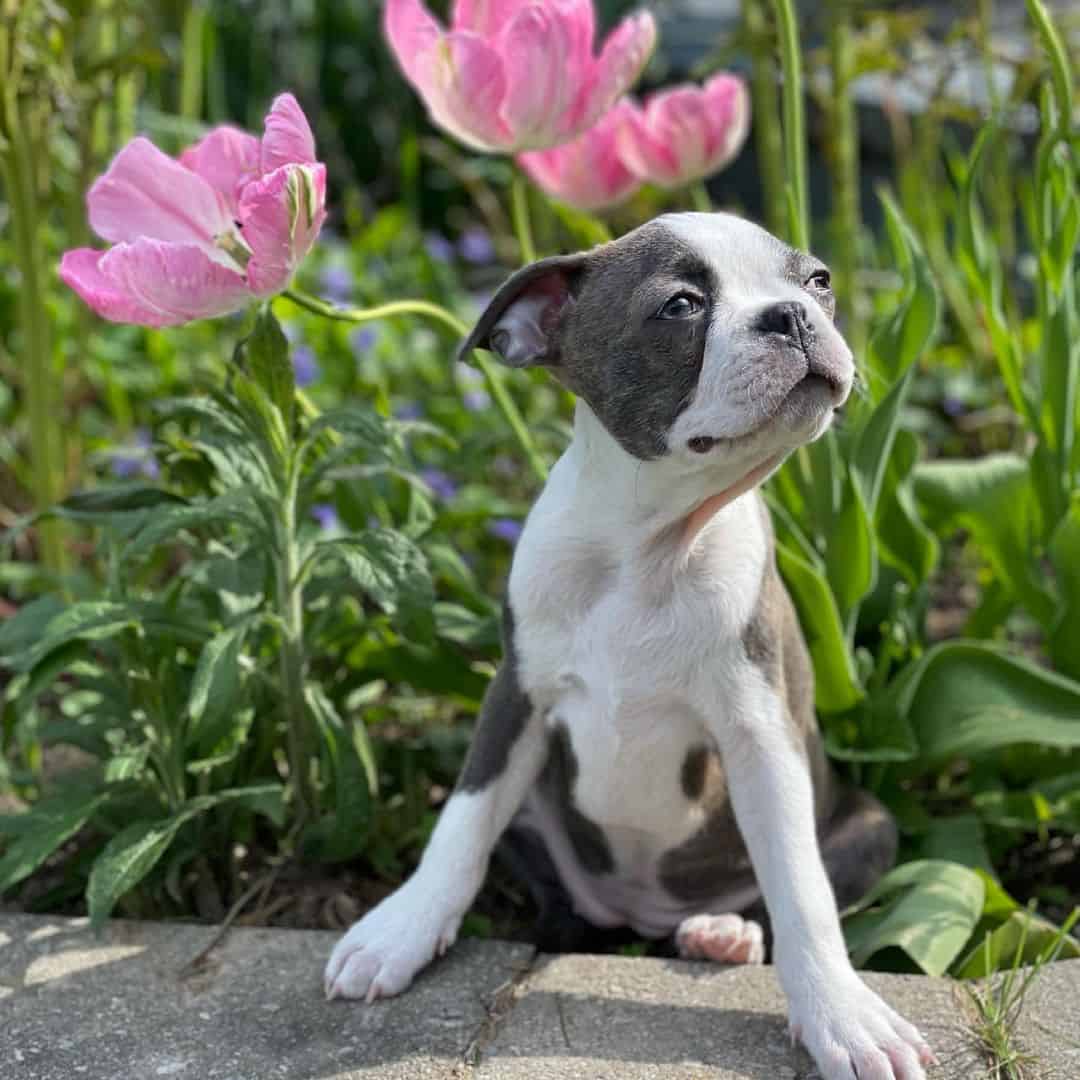
Photo from: @mavis_theblueboston
Boston Terriers are intelligent animals, and it’s relatively easy to train them. The key to success: be as kind to them as you can as much as you can.
Never use harsh punishments, especially when they are stubborn. Consistency and affection work like charms.
It’s crucial to teach your dog basic obedience, to housebreak it, learn to walk on a leash, and most importantly – to socialize the pup!
Start with simple commands like sit, stop, come, and stay. Later on, you can build up your commands as your dog progresses with the training.
The blue Boston Terrier responds very well to clicker training and treats. It’s a life-saving device when it comes to training!
But, housebreaking may be a little difficult. That’s why you’ll need lots of patience and a good training schedule.
The biggest problem these dogs have is unnecessary digging, especially if they’re alone for too long. Training your blue Boston Terrier puppy not to dig all over the place will be a difficult task.
What’s a bit simpler is leash training, all thanks to their enthusiasm for walking. Keep in mind these three words: consistency, affection, and attention.
Full Grown Blue Boston Terrier: Cleaning And Grooming Requirements
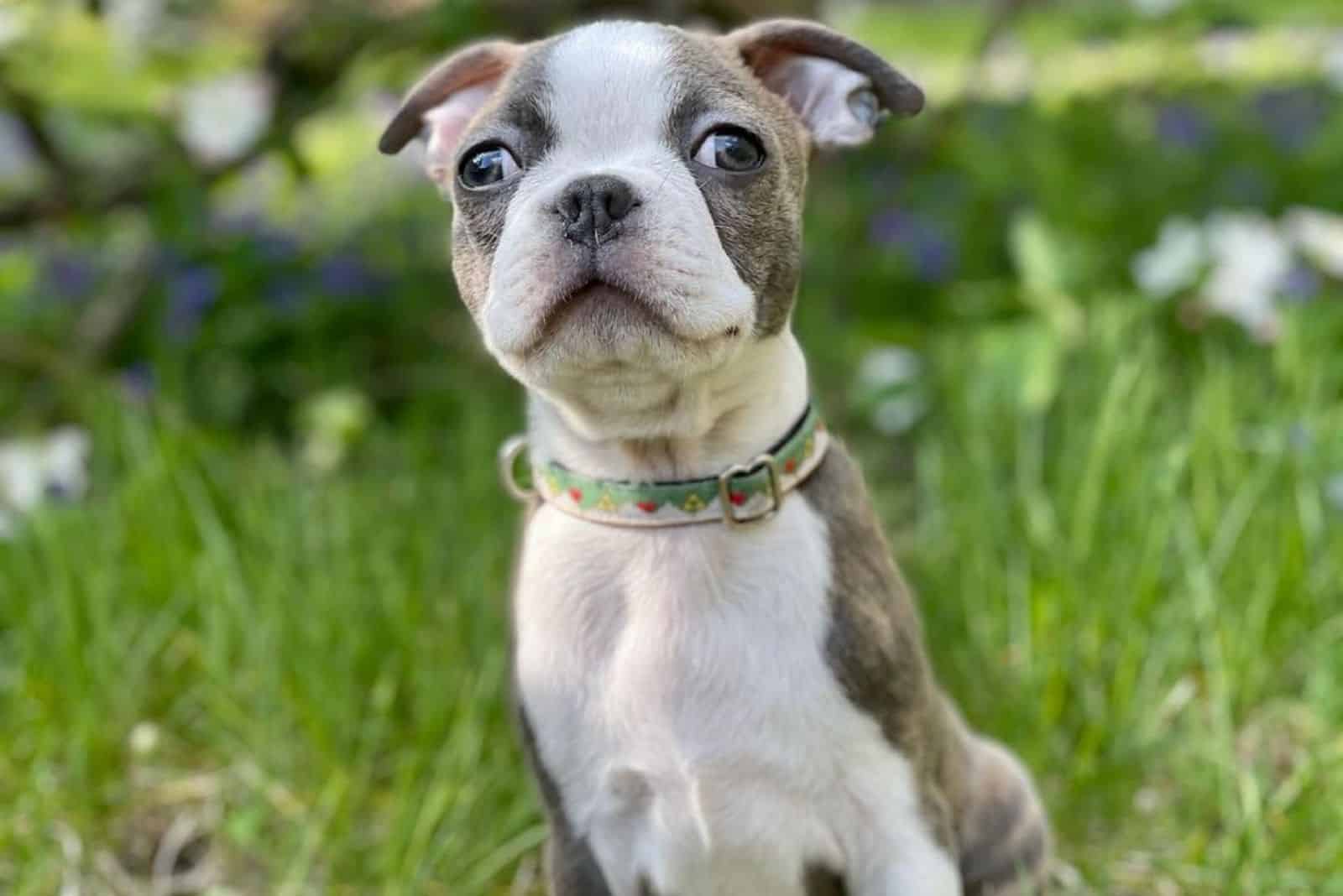
The blue Boston Terrier has a sleek coat, but it still requires regular grooming and bathing.
Your dog may be bathed every week for up to six weeks.
Before bathing, you should blow-dry your dog to loosen any dirt and shed hair. It wouldn’t be half-bad to brush him lightly either!
Never bathe your blue Boston Terrier with harsh shampoos. Use natural ingredients and mild products that don’t cause skin allergies. Pay special attention to wrinkly areas when cleaning.
Generally speaking, the blue Boston Terrier is a delight to groom, and they are low maintenance. Sadly, we can’t say they’re hypoallergenic dogs.
Blue Boston Terrier Puppy: Pros And Cons Of Having One
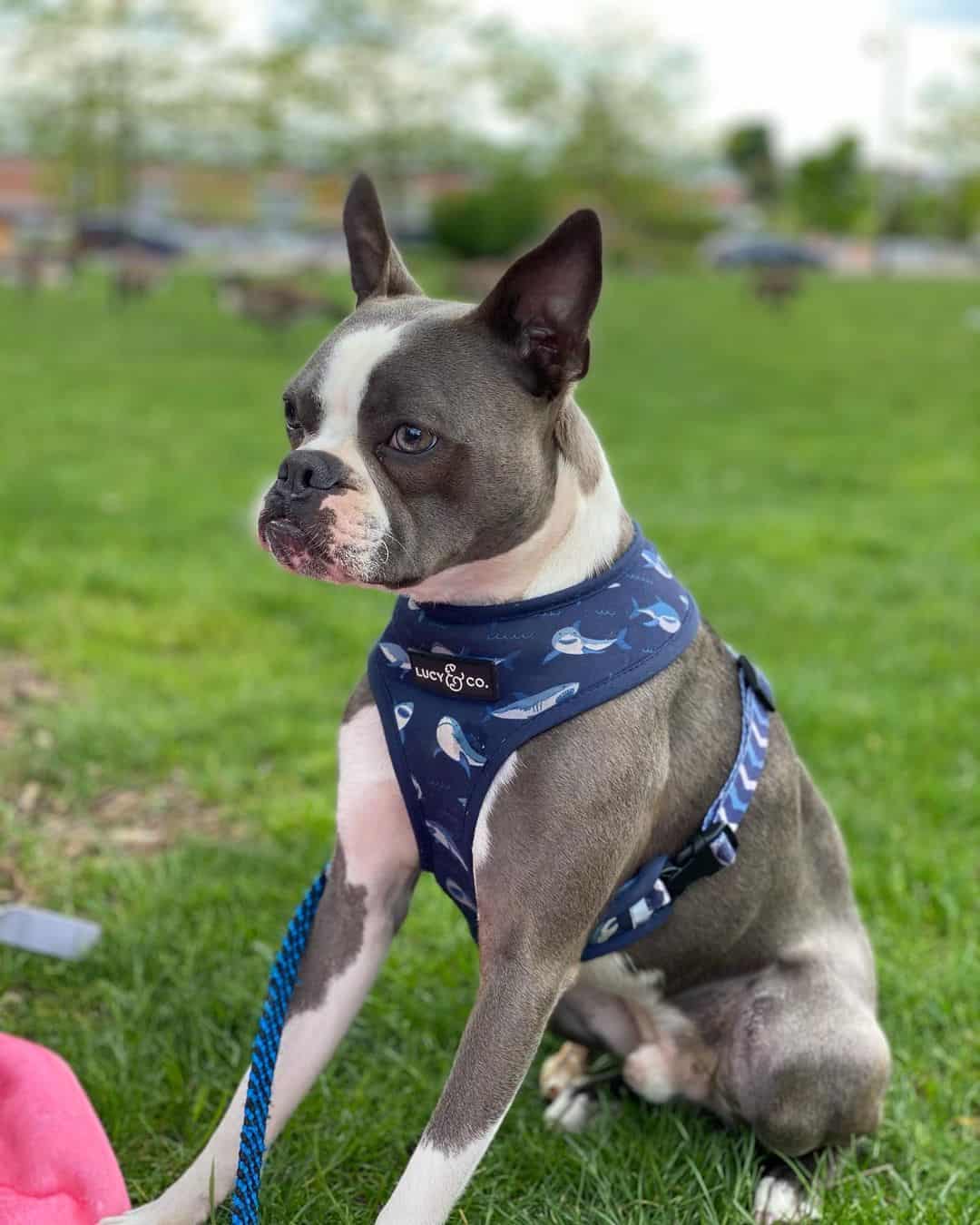
Photo from: @geordie_theboston
This adorable companion dog is the 21st most popular out of a list of 190 purebred dogs. Also known as the American Gentlemen, the blue Boston Terrier still has some advantages as well as disadvantages you need to know before adopting.
Pros
• They’re one of the most social breeds and fit perfectly into a house with kids and seniors. They make excellent house pets because of their lovely and cheerful personality.
• These dogs either bark quietly or don’t bark at all. They never bark or yap at things. In other words, the blue Boston Terrier is the best apartment dog if you have a difficult neighbor.
• The blue Boston Terrier doesn’t need much grooming, and it only sheds a little. However, you still need to pay attention to their nails. Other than that, it’s pretty easy to groom this dog breed.
• They’re small dogs, perfect for small apartments. Could it be any better?
• Their overall health status is not affected by skin issues these dogs might have.
Cons
• The Boston Terrier has a sensitive digestive system and must eat high-quality protein-based dog food. Beware, they’re little nasty farting machines.
• Their big eyes can easily get injured. In addition, they have a short muzzle that makes contact with plants, thorns, or other pointy objects even more dangerous and more likely to scratch their corneas.
• They have a chirpy nature, which may be problematic from time to time. Meaning, these pups will eat anything that comes near their mouths, hence their flatulence. Since they love sugar a lot, you need to be extra careful; otherwise, they may develop canine diabetes.
• Blue Boston Terriers are as stubborn as it gets! If you ever try correcting them harshly, they’ll fight back and show how difficult it can be to deal with them.
• The Blue Boston Terrier is susceptible to many other diseases than the standard Boston Terrier all because of their dilution gene, which causes skin issues.
Even though there are quite a few negative traits about these dogs, many Boston Terrier lovers claim it’s easy to take care of them.
The setbacks and positive traits related to this dog are the same, no matter the color. The red Boston Terrier may have the same issues as the lilac Boston Terrier, white Boston Terrier, or one that sports a black coat. The coat color doesn’t matter when it comes to health.
How Much Is A Blue Blue Boston Terrier?
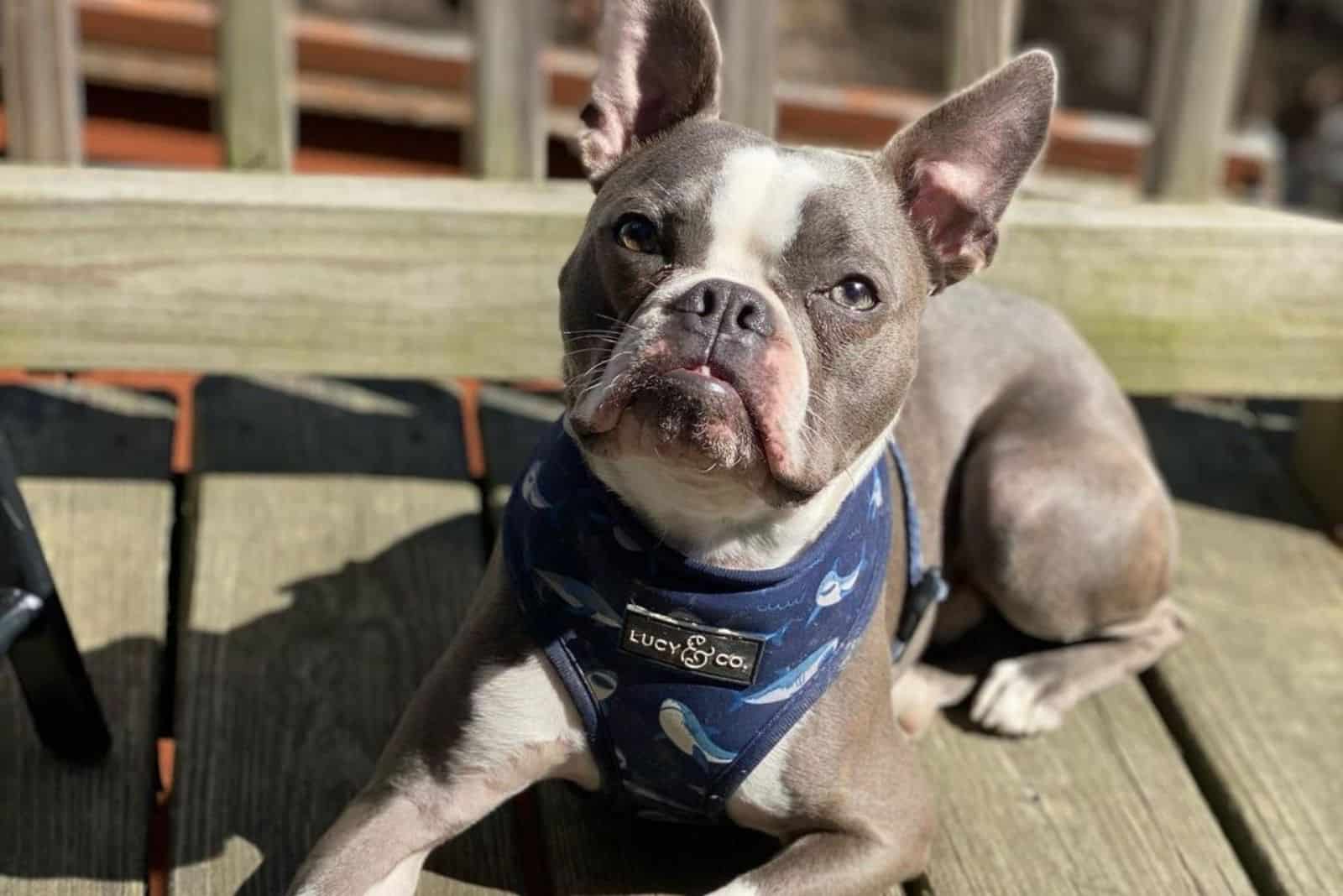
These cool pups have a price, and it’s not cheap to begin with.
You can expect to pay between $600 to $1,200 for a purebred blue Boston Terrier. Pups that are not purebred Boston Terriers can be found at a lower price.
The higher the price, the higher the chance of getting a top-notch blue Boston Terrier puppy.
Truly, they’re worth every penny!
Blue Boston Terrier: Other Expenses
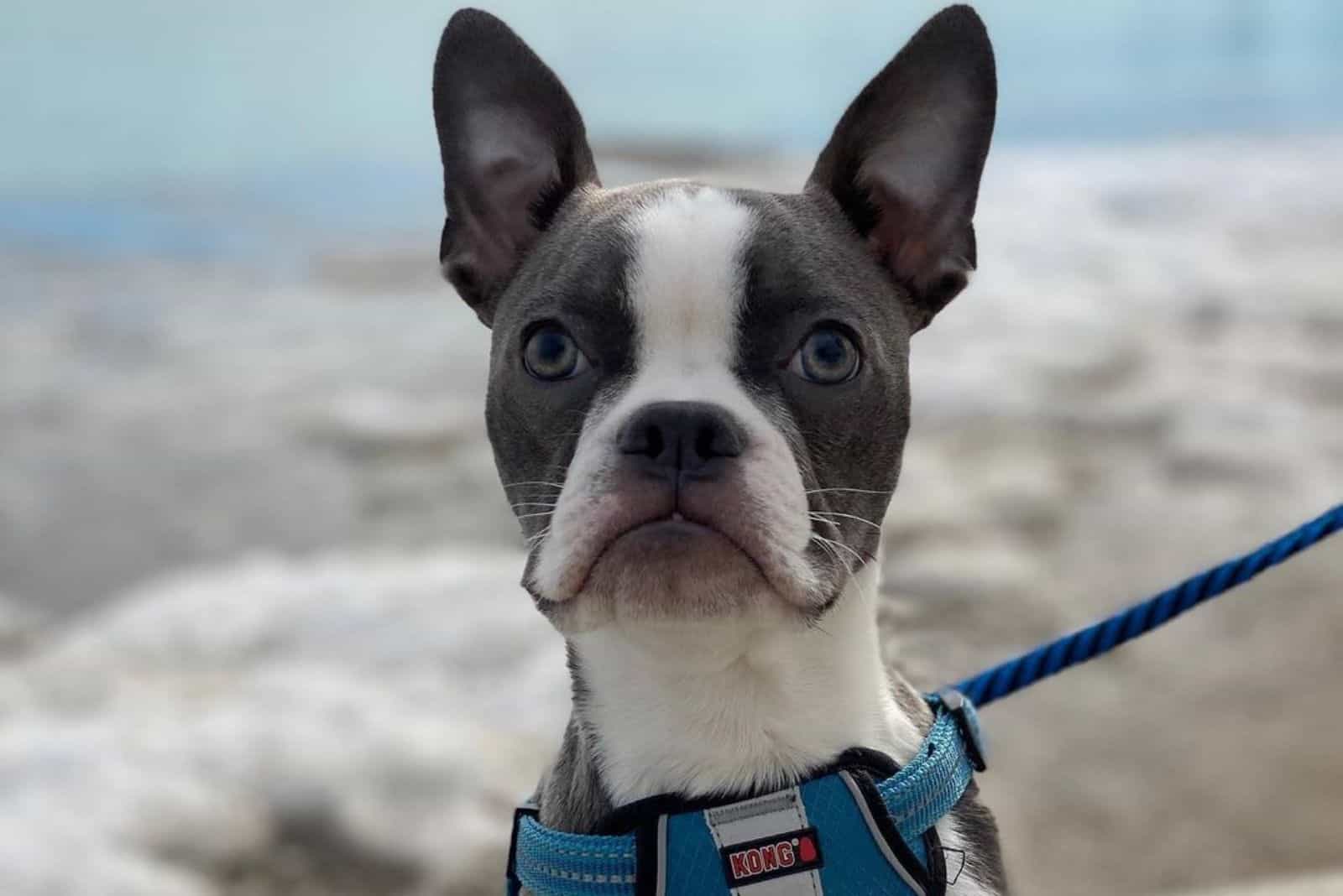
Their food and treats can also be a bit expensive. Expect to pay around $200 to $700 a month, depending on the food’s quality.
Also, if you have no previous experience in dog grooming, an additional budget for a groomer must be found. It can be anywhere from $30 to $500, depending on the services you want.
The blue Boston Terrier is quite expensive to take care of, especially because of their medical conditions. The vet cost can be very high, as high as $1,100!
Blue Boston Terrier Puppies For Sale: Where To Get One
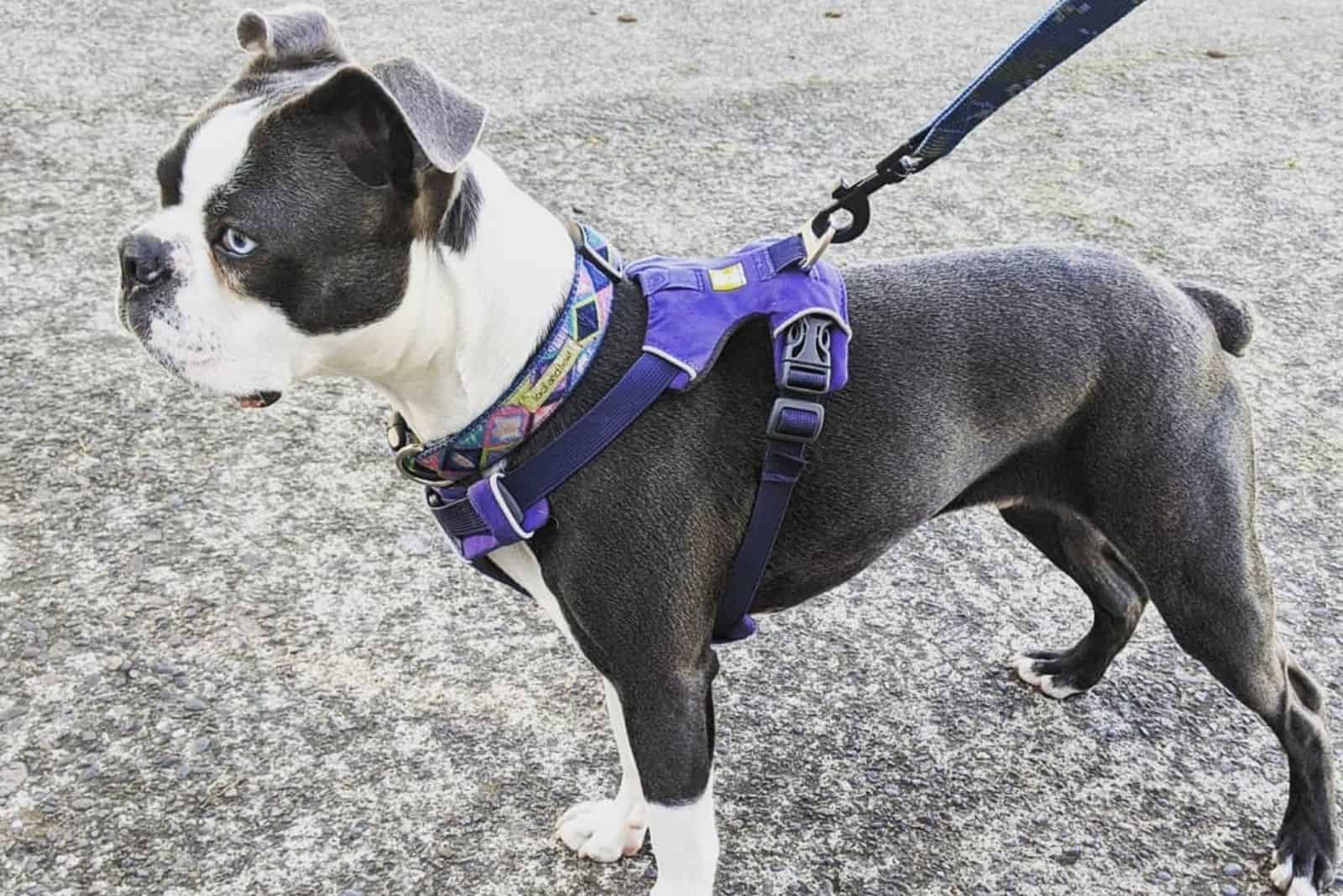
Even though they look unique, and you may think they’re quite rare, buying a Blue Boston Terrier won’t be as hard as you think.
You can easily find a Boston Terrier breeder online or a shelter that offers these pups for adoption.
However, what’s important to know is that there are a lot of scammers online ready to trick you. Finding a responsible breeder that offers health certificates for eye disease and orthopedic certificates should be your biggest concern.
If you, by any chance, can’t get your hands on a purebred blue Boston Terrier, there are mixes, like those with a Pit Bull, that make ideal substitutes.
The key to getting a blue Boston Terrier is to be persistent and keep on looking. Eventually, one of your local shelters may give you a call and say they’ve got one just for you.
Final Thoughts
When you think of all the pros and cons of this feisty, adorable Terrier, I’m sure the end result will be that you can actually handle a blue Boston Terrier. They can be demanding from time to time, but they’ll shower you with love and affection.
The moment you get one of these babies, you’ll fall in love. The blue Boston Terrier is a gentleman at heart and a true friend for life.
Read Next: Boston Terrier Breeders In The UK: Top 5 Breeders You Can Trust


